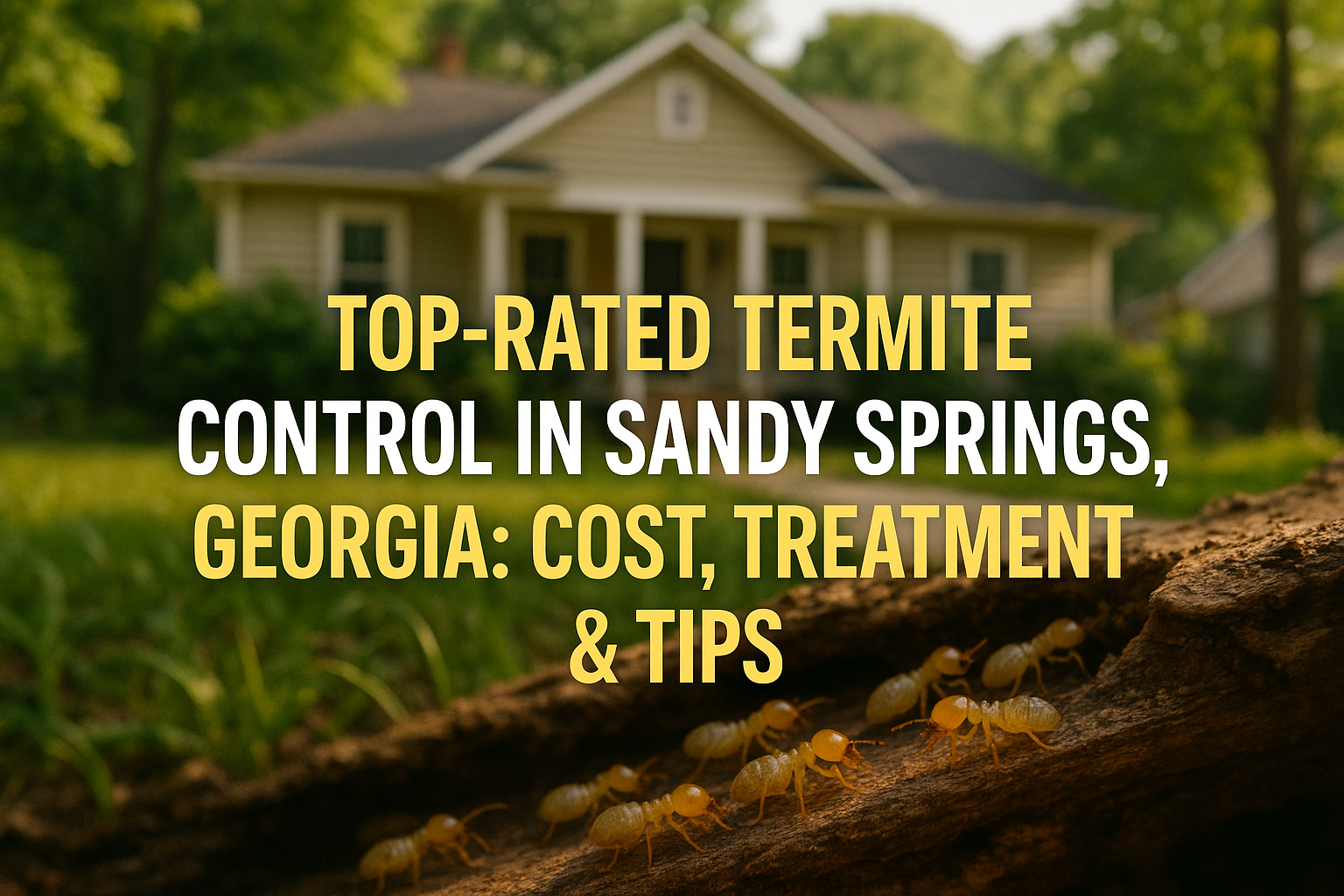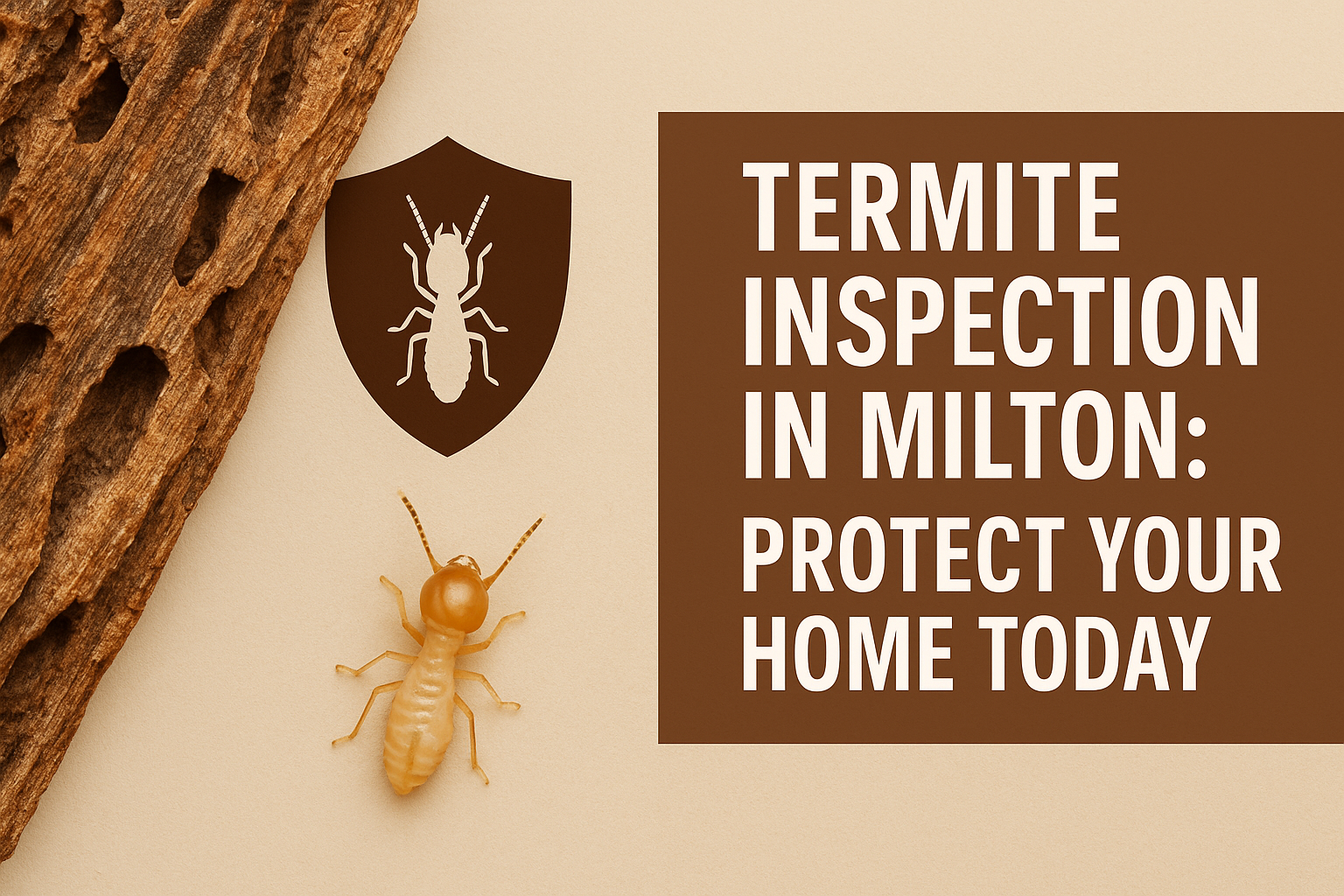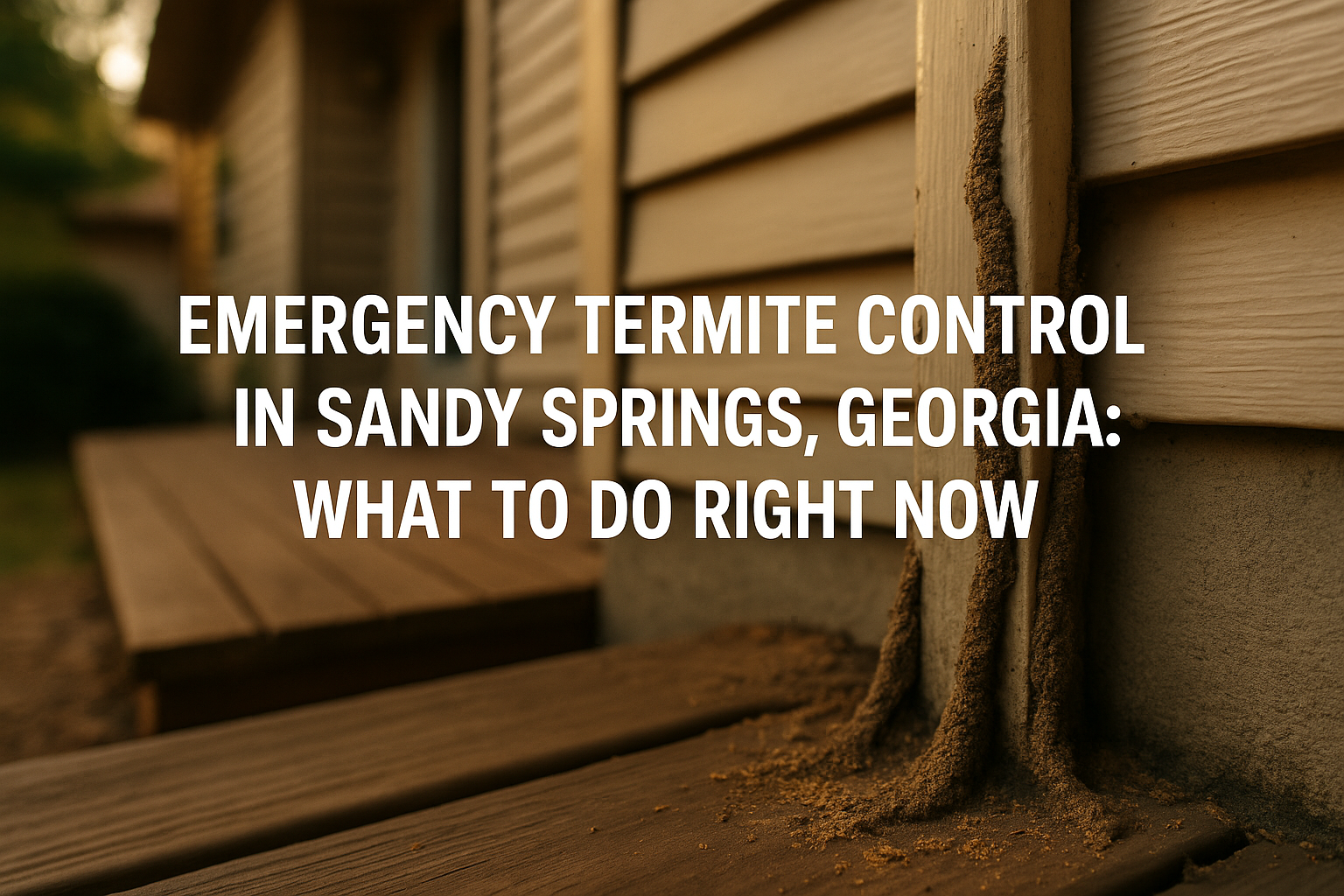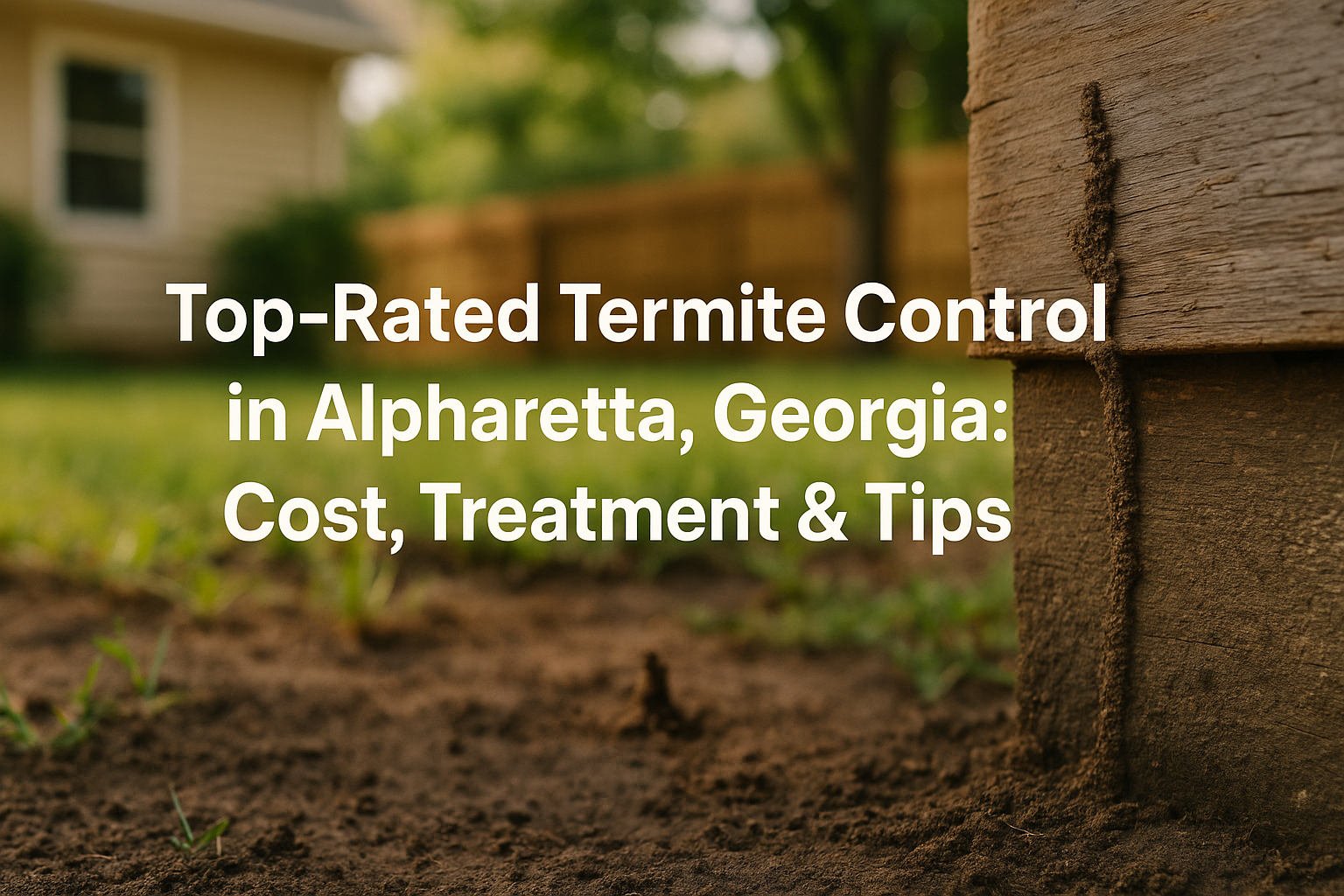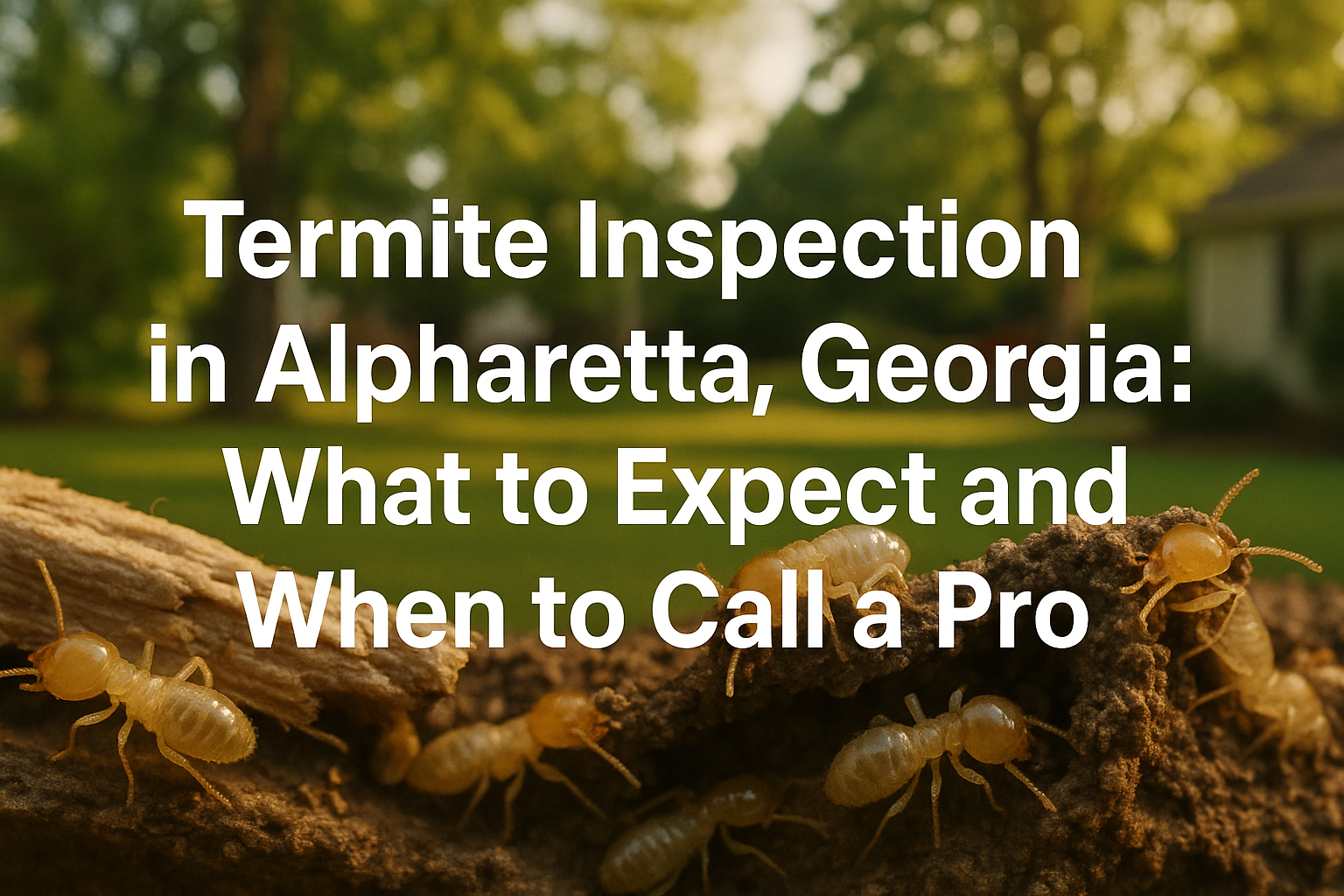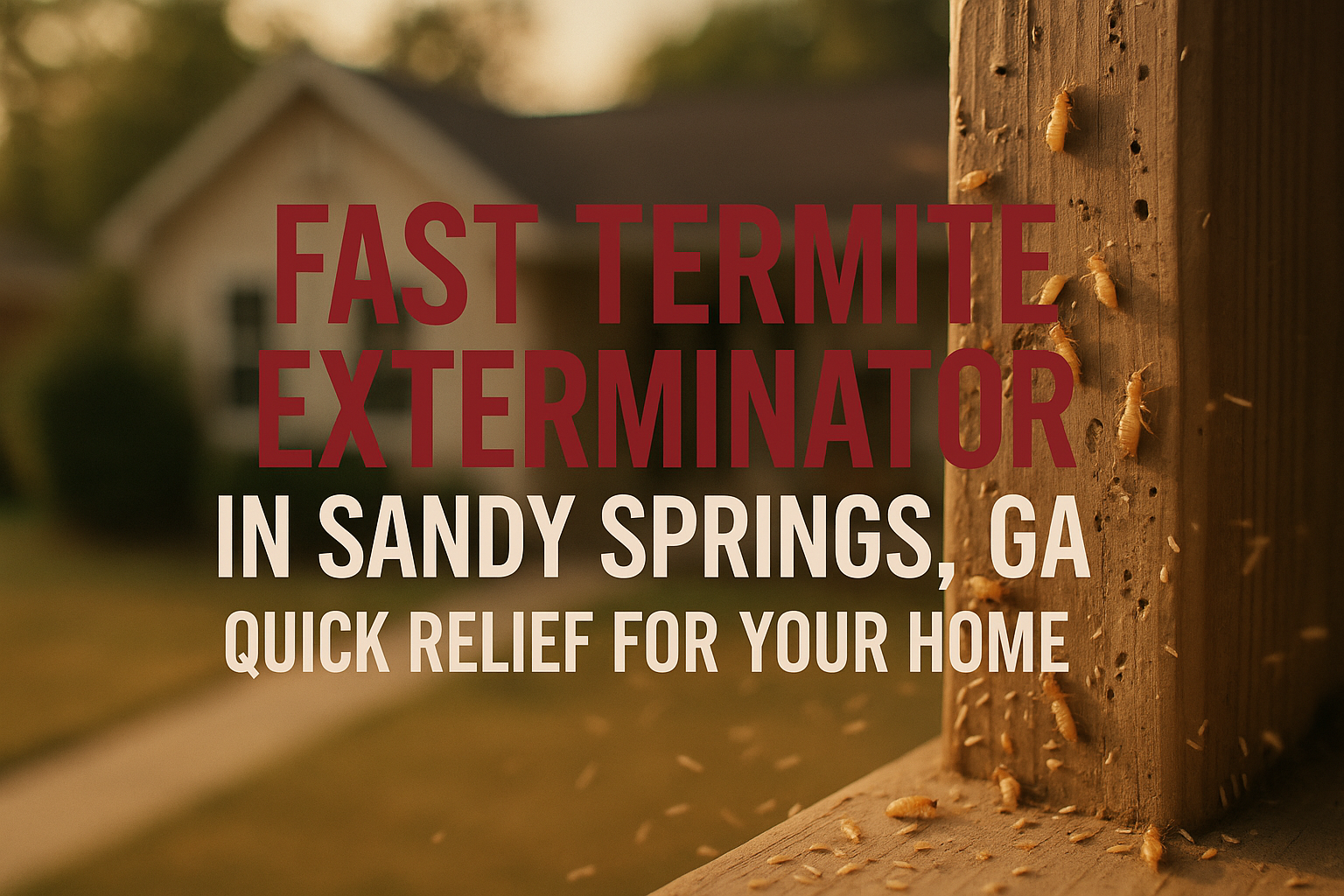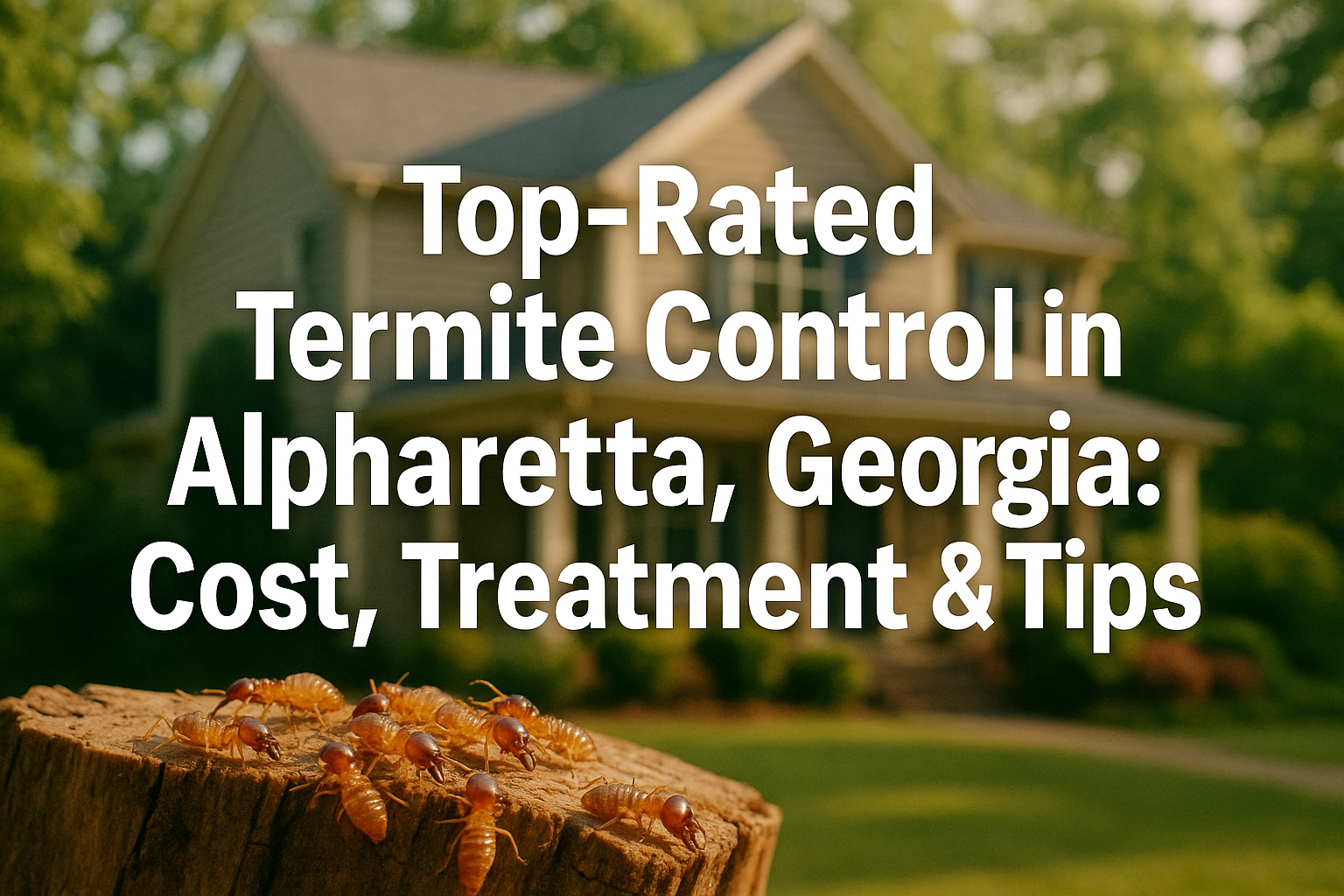Termite Problems Hit Close to Home in Sandy Springs
If you own a house in Sandy Springs, termite trouble isn’t just some distant issue—it’s something you’ve got to keep on your radar. Our muggy Georgia climate is paradise for termites, and that means homes in neighborhoods like Riverside, Hammond Hills, and Dunwoody Panhandle are always in the crosshairs. For this reason, termite control Sandy Springs Georgia is an important consideration for every homeowner. These little pests don’t make a fuss or leave an obvious mess; by the time you notice something’s off, they’ve already done thousands of dollars’ worth of hidden damage behind your walls and under your floors.
Here in Sandy Springs, we see folks get surprised every year when small warning signs turn into big repair bills. The cost to fix termite damage—plus a thorough treatment—can range from $1,300 to $3,500, depending on how bad the outbreak is and how quickly you act. When termites dig in, they move fast, and that price only climbs the longer they go unchecked.
So, what can you do about it? This guide breaks down everything you need to know, including:
- Why termite control is an urgent must-do, especially with our weather and local housing styles
- Realistic costs for protecting (or saving) your home
- Which treatment options work best for Sandy Springs properties
- How to get ahead of termites before they become a wallet-busting headache
We’ll help you spot the risks, compare choices, and make moves to shield your biggest investment—your home—from these silent destroyers. Whether you’re worried about an old house in Riverside or a newer build near Glenridge, it pays to be prepared. Keep reading and you’ll be ready to make smart, cost-saving decisions for your peace of mind.
What Impacts the Cost of Termite Treatment in Sandy Springs?
If you’ve spotted suspicious signs of termites or you’re just keeping your home protected, it’s natural to wonder what actually goes into a termite control Sandy Springs Georgia treatment quote. From experience working with Sandy Springs homeowners across Glenridge, North Springs, and beyond, here’s what really drives those numbers up or down:
- Size & Layout of the Property: The bigger the house, the more ground to cover. Ranch home in North Springs? That’s a lot of slab and crawlspace for crews to inspect and treat, so you’ll see a higher figure than if you lived in a smaller place or townhouse.
- Infestation Severity: A small catch early on—in a single wall or garage door frame—can be addressed with focused spot treatments. But if termites have chewed their way through several rooms, you’re looking at major labor and materials, with a price tag to match.
- Treatment Method: There’s a difference between liquid chemical barriers and bait systems; baits tend to cost more upfront, though they may pay off in long-term peace of mind and potentially fewer annual maintenance visits.
- Property Type & Neighborhood: Historic homes or custom foundations in areas like Riverside or Huntcliff can be tricky, sometimes requiring specialty equipment or extra steps to access crawl spaces and unusual construction features.
- Accessibility: Got a fully finished basement, tight crawlspace, or garden beds butting up against your foundation? The harder it is for technicians to get to the problem, the higher the cost—mainly because it takes more time and resources to do the job right.
Most reliable pest control companies—including Anthem Pest—bundle everything: inspection, treatment, and those all-important follow-up visits. This full-service approach means you’ll typically see a range of $1,300 to $3,500 for a thorough termite control Sandy Springs Georgia protection plan. Minor jobs or preventative plans could be at the lower end; major infestations on big properties land closer to the top.
While the sticker price can seem steep, remember: a comprehensive treatment now is way more affordable than paying to repair structural termite damage down the line. If you’re curious about the specifics for your property, it’s always best to schedule a professional inspection—an honest, on-site assessment is the surest way to get real numbers and peace of mind.
What Impacts the Cost of Termite Treatment in Sandy Springs?
If you’ve spotted suspicious signs of termites or you’re just keeping your home protected, it’s natural to wonder what actually goes into a termite control Sandy Springs Georgia treatment quote. From experience working with Sandy Springs homeowners across Glenridge, North Springs, and beyond, here’s what really drives those numbers up or down:
- Size & Layout of the Property: The bigger the house, the more ground to cover. Ranch home in North Springs? That’s a lot of slab and crawlspace for crews to inspect and treat, so you’ll see a higher figure than if you lived in a smaller place or townhouse.
- Infestation Severity: A small catch early on—in a single wall or garage door frame—can be addressed with focused spot treatments. But if termites have chewed their way through several rooms, you’re looking at major labor and materials, with a price tag to match.
- Treatment Method: There’s a difference between liquid chemical barriers and bait systems; baits tend to cost more upfront, though they may pay off in long-term peace of mind and potentially fewer annual maintenance visits.
- Property Type & Neighborhood: Historic homes or custom foundations in areas like Riverside or Huntcliff can be tricky, sometimes requiring specialty equipment or extra steps to access crawl spaces and unusual construction features.
- Accessibility: Got a fully finished basement, tight crawlspace, or garden beds butting up against your foundation? The harder it is for technicians to get to the problem, the higher the cost—mainly because it takes more time and resources to do the job right.
Most reliable pest control companies—including Anthem Pest—bundle everything: inspection, treatment, and those all-important follow-up visits. This full-service approach means you’ll typically see a range of $1,300 to $3,500 for a thorough termite control Sandy Springs Georgia protection plan. Minor jobs or preventative plans could be at the lower end; major infestations on big properties land closer to the top.
While the sticker price can seem steep, remember: a comprehensive treatment now is way more affordable than paying to repair structural termite damage down the line. If you’re curious about the specifics for your property, it’s always best to schedule a professional inspection—an honest, on-site assessment is the surest way to get real numbers and peace of mind.
Why Termite Risk Isn’t the Same for Every Sandy Springs Home
Living in Sandy Springs, you probably already know that the weather isn’t always on our side when it comes to pest problems. The combination of our sticky, humid summers and pretty mild winters creates an ideal setup for termites to get busy—and stay that way. This kind of weather actually wears down traditional termite barriers faster, meaning older treatments just don’t last as long here as they might elsewhere.
Now, let’s talk neighborhoods. Places like Mount Vernon Woods or Windsor Heights often have homes with wooden crawlspaces, basements, or slab foundations. These features might give you that sought-after Southern charm, but they also hand termites easy invitations right under your feet. On top of that, if your yard has things like wood mulch beds hugging the siding, chunky retaining walls, or big trees with canopies brushing up against the house, termites get even more reasons to stick around. Once you throw all these factors together, your risk needle jumps higher.
How your house is built matters a lot, too. Homes with intricate designs, hidden crawlspaces, or materials that are tough to treat end up making any termite job more complicated. Water management issues—stuff like poor drainage, leaky gutters, or places where water pools up—feed right into a termite’s plan, giving them everything they love. And with trickier setups, it’s not just the labor that goes up; expect the price tag to reflect that extra time and effort.
Sandy Springs isn’t flat and dry—soil types change from yard to yard, and homes close to creeks or water runoffs deal with extra moisture in the ground. Termites chase after this; it drives their colonies to grow and makes chemical or bait treatments trickier to apply effectively. Every home’s environment sets the stage for what kind of control will actually work, and what it’s going to cost.
So, if you’re sizing up your risk or trying to budget for protection, it’s not just about the square footage of your house. The mix of local climate, your property’s design quirks, yard features, and even your spot on the map all help set the real price—and the real strategy—for keeping your place safe from termites.
Simple Moves That Save Big: Termite Prevention Tips for Sandy Springs Homes
If you love your home (and your bank account), a little termite prevention goes a long way. The best line of defense is staying ahead, rather than playing catch-up with costly repairs. Here’s how Sandy Springs homeowners can keep termites in check without breaking the bank—just a few practical habits can make all the difference:
- Lock in an annual inspection. Even if pests seem like last year’s problem, scheduling a yearly visit from a local termite pro is the smartest investment in your home’s future, especially in neighborhoods that see frequent activity.
- Keep the foundation dry. Termites love moisture almost as much as they love wood. Clean your gutters regularly and use downspouts that send water well away from your house. Good drainage in your yard keeps those unseen crawlspaces dry and uninviting to pests.
- Give wood some space. Firewood, scrap lumber, and old decking boards piled up next to your house are basically an all-you-can-eat buffet for termites. Make it a habit to store these items off the ground and at least 18 inches away from your foundation.
- Clean up, clear out. Dead trees, stumps, and even mulch too close to the house can lure termites in. Getting rid of these wood sources, along with any cellulose-based debris, removes the main attractants—no need to roll out the welcome mat for pests.
- Seal those sneaky gaps. Take a walk around your home and look for cracks in your foundation or gaps around pipes and wires. Sealing up these spots gives termites one less way to get inside and keeps your home better protected from all sorts of pests.
- Think long-term solutions. For homes with basements or crawlspaces, moisture barriers and professional-grade termite bait stations are a solid move. Not only do they help stop infestations before they start, they can save you hundreds—if not thousands—on repairs down the road.
Sticking to these simple, proactive steps now pays off in peace of mind later. Protecting your Sandy Springs home from termites doesn’t have to be complicated or costly, just consistent—and your home (and wallet) will thank you.
When Should You Get a Termite Inspection or Treatment in Sandy Springs?
If you’ve lived in Sandy Springs for a while, you know that termites don’t exactly wait for an invitation. But there’s one time of year when they really kick things into high gear: spring. From late March through May, termite swarm season is in full swing here. This is the prime window for termite control Sandy Springs Georgia inspections and treatments because those swarming bugs are either looking for a new home or getting ready to feast on yours.
Folks in neighborhoods like Spalding Lake and The Branches are pretty savvy about this. They don’t mess around—they schedule their annual termite checks every spring before those silent invaders have a chance to do any real damage. Catching an infestation early can save you from a world of expensive repairs.
But what if you’re not ready for spring? Here’s a little local tip: scheduling an inspection in late fall or winter can be a smart move. Business usually slows down for pest control companies during these colder months, which means faster service and, sometimes, even lower prices. Keep an eye out for off-season specials—it never hurts to ask about a deal.
Buying a new home around Sandy Springs? Don’t play roulette with your biggest investment. Order a termite inspection no matter the season. Hidden damage from termites is not something you want to discover after you’ve signed the papers.
- Spring (March-May): Key time for inspections and treatments—don’t skip it.
- Late Fall/Winter: Potential for better prices and quick appointments.
- Home Buying: Always order a full termite inspection, regardless of month.
Termites don’t take time off, so year-round vigilance really pays off. Setting up an annual inspection with a local pro means you’ll always be one step ahead. You get peace of mind, and your home gets the steady protection it deserves.
Protect Your Home—Get a Free Termite Assessment Today
If you’re ready to put a stop to termite worries, Anthem Pest Control is just a call or click away. Our experienced team knows Sandy Springs inside and out, and we treat your home as if it were our own. Get your free, no-pressure inspection and see how our eco-friendly approach delivers results you can count on. We back every job with a 100% satisfaction guarantee, so you can feel confident choosing Georgia’s top-rated termite experts.
Why wait until termites do serious damage? Give us a call at 877-371-85196 or schedule your complimentary quote online today. Experience pest control the local way—honest, reliable, and always focused on your peace of mind.
Termite Control Questions Sandy Springs Homeowners Ask (and Straight Answers)
If you’ve got a termite control Sandy Springs Georgia question, you’re definitely not alone—here are answers Sandy Springs homeowners like you ask us all the time, with nothing sugarcoated.
- How often do I really need an inspection?
Once a year is honestly the bare minimum, especially in Sandy Springs where termites like to stay busy. If you’ve already had problems, or your neighbor just did, don’t wait—reach out sooner. - What’s the deal with termite treatment—what does it include?
You’ll get a full inspection, a custom-placed treatment (could be liquid, could be bait—depends on what we see), monitoring stations if needed, and follow-up checks to make sure those pests stay gone. - Are the chemicals really safe for my pets and kids?
Good pest control is about peace of mind! Anthem Pest uses only family-safe, eco-friendly products that are rigorously tested and approved by top industry authorities. You and your pets are in safe hands. - Will my homeowner’s insurance cover termite damage?
Unfortunately, no. Most insurance policies leave termite damage out, which is why protections and guarantees from a legit termite company mean so much here. - Which treatment is best—liquid or bait?
It honestly depends on the layout of your home, how bad the problem is, what we find in the soil, and a few other factors. That’s why it’s smart to have Anthem Pest come out for a free assessment and talk you through your best options—no cookie-cutter solutions. - How long will the treatment last?
Quality termite treatments can protect you for several years, especially with annual checkups and boosters. We don’t just spray and dash—we stick with you to make sure the protection keeps holding. - What’s it going to cost me for annual monitoring?
Most companies (including Anthem) bundle annual monitoring into treatment plans. For an average Sandy Springs home, you’re looking at about $300 per year, but the price can vary with your square footage and specific needs. - Do you really stand behind your work?
With Anthem Pest, yes 100%. We back you up with unlimited re-service until the termites are gone. Plus, you can get a solid damage-repair guarantee for total peace of mind.
Still have questions for a real pro? Give us a call or schedule an inspection—we’re always happy to chat termites and make sure your Sandy Springs home is in the clear.

